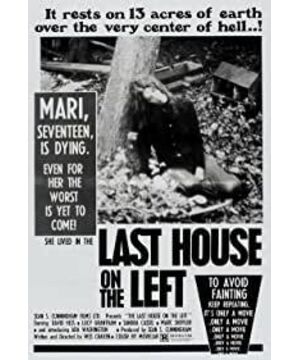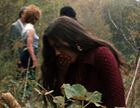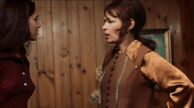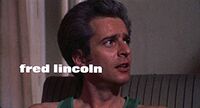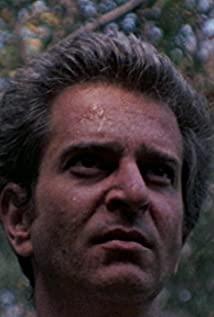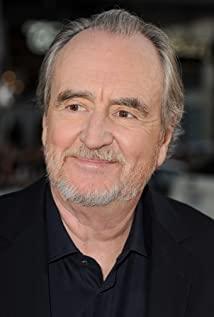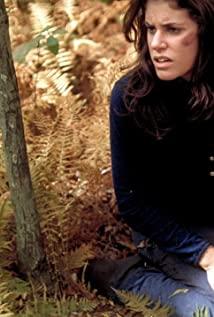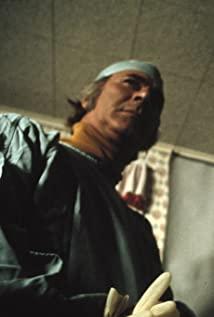The movie "Killing No One Left" is a horror film made in the United States in 1972, and the film is not long. Due to different abridgements made by countries, the duration varies from 64 minutes to 84 minutes. The dialogue is in English and French. The plot of the story is: Mary is the daughter of a middle-class family. Although the family is not rich, she has a happy life. On the eve of Mary's twentieth birthday, she went shopping with her friend Phyllis. At the time of their adolescence, they were full of strong curiosity about the unknown world, and the idea of buying marijuana for smoking was germinated on the way. They found several sellers who were dealing in drugs on the street, and they found out that they had been kidnapped deliberately when they entered the door of the group. The next day, four criminals hijacked them and went to the jungle in the suburbs, insulting, beating and scolding them wantonly. Phyllis thought of a risky move to escape, she led three of them away, and Mary also bitterly persuaded the young man left to let her escape. Phyllis ran desperately, fell into a circle of three people in a panic, and was stabbed to death by a criminal who became angry and embarrassed. Mary was also caught by the three who were driven back on the way to escape, and was shot and killed after being brutally raped. The four of them fled in a hurry to stay at a family home, who knew it was Mary's house. Mary's parents were very anxious when seeing their daughter hadn't returned for a long time, and they had already reported the case. While entertaining the four people, Mary's mother accidentally discovered the traces of their killing Mary when she was sorting the clothes of the four people. After passing through the partition wall, Mary's parents found her daughter's body by the lake. In grief and indignation, the couple drunk and separated the three of them (the young man committed suicide because he had witnessed the shooting scene and became insane), and then used more cruel methods to kill the murderers one by one. When the police arrived, they found Mary's parents weeping silently facing the prepared birthday cake...
The English name of the film is "The Last House on The Left", which translates to "killing regardless of right or left" is a bit explicit. Just like translating "Caligula" into "The Roman Empire", it is a gimmick deliberately created by film distributors in order to attract attention and increase sales. The English film title refers to the location of the house where Mary lives in the movie, and plays a certain role in promoting the development of the plot. The story revolves around Mary’s residence. The place where she played with Phyllis and the place where the kidnappers killed her are not far from Mary’s home. It is worth mentioning that the use of azimuth as the title of the film objectively increases the tension.
After two hundred years of constitutional rule in the United States, the domestic security situation should be far better than that of developing countries. Otherwise, a middle-class family would not easily choose to settle in such a remote place, and would also erect a mailbox with the home address on the road to notify passers-by. Knowing gangsters just took advantage of the negligent defense of a gentleman, kidnapped the guardians of peace in a grand manner, and carried out criminal activities under the eyes of the people around them, until they killed the parties. This cannot but be said to be the tragedy caused by the loopholes in the social system. Is the victim not at all at fault? Obviously not. Obviously, it was the urge to smoke marijuana that caused the two poor girls to sink into hell, unable to ask for help from the outside world. In addition to their curiosity, the decadent thoughts left to American youth from the Vietnam War cannot be ignored. It broke out in 1964, and the Vietnam War that ceased in 1973 left an entire generation of Americans with indelible trauma. In 1972, the fighting had basically subsided, but the seeds of scars planted by American soldiers returning home were blooming everywhere. How many young people began to smoke marijuana, depressed and degenerate in the cloud of cloudiness. Judging from the film’s scenic features and dialogue language, the two girls living on the border of the United States and Canada were relatively light-hearted by this trend of thought. Even so, the difference in the mental state of the entire American people can be imagined.
In addition, the police's stubbornness after taking over the case and the unexpected teasing on the way to the crime scene also highlights the inherent humor of ordinary Americans. The indifference of homeless people and truck drivers towards police work and even malicious jokes and ridicules are nothing more than bringing a somewhat comic effect to the film, and it is undoubtedly adding fuel to the deadly case. With humorous and relaxing music, the audience has an uncontrollable body odor on the surface, but they sweat for the girls in their hearts. What needs to be pointed out is that the use of this artistic technique is not very appropriate, and the coordination and unity of the film style is broken. Whether it should be attributed to the popular mentality of pursuing strangeness caused by the prevalence of hippies at that time, I will put it aside for the time being.
The film also focuses on the good and evil of human nature. The young man guarding Mary didn't actually want to be with the three gangsters. He just wanted to drive for them and got on the thief boat. At the pleading of Mary, he agreed to her escape from the scene and wanted to walk away with her. After seeing Mary being murdered, he was in a daze and talked nonsense while sleeping. In the end, he couldn't stand the mental torment and shot himself to death, but he was in pain. Although the three gangsters are very heinous, but when they raped Mary and saw Mary walking towards the lake in desperation, the sad background music sounded, and the three of them were silent in unison, and the hands holding the daggers fell down involuntarily, with brutal eyesight. There is a subtle softness. Such a few close-ups are the highlights of the movie. Although it has no effect on the development of things (a few minutes later, the criminal still raised the pistol to Mary who is not in the middle of the lake), it creates a soothing atmosphere and allows the audience There is a short thinking time. The theory of goodness of nature and the theory of evil of nature is a debate topic in ancient Chinese Confucianism. Westerners naturally know very little about Confucianism, but it does not prevent them from unconsciously mixing such rational brilliance in movies. The newly produced South African film "The Gangster Thug" also has a similar exploration of human nature, which can be used as references.
There are not many exposed scenes in this film, just two or three. According to the official statement, the reason for the ban is largely the extreme authenticity of the scene, almost reaching the level of a documentary. From stepping into the criminal’s house, the girl has gone through several episodes of struggles—personality humiliation—planning to escape—unfortunately being caught—tragally murdered. This is simply a reappearance of the original case! The girl’s helpless cry, the criminal’s triumphant grin, the heart-piercing look of the victim’s parents, together with the blood-filled dagger and the corpse with a broken stomach, gave people a strong visual shock. But look at today’s Hollywood blockbusters, whether it’s "Horror Wax Museum", "Nude Cutting", or "Saw Cry" or "Dropped Head", the degree of flesh and blood, and the special effects used surpass ignorance. The stage of "Killing is Regardless of Left and Right", which makes people suspect that there is an inside story behind its ban. After all, the members of the film censorship committee have a much more complicated mind than the plot of the film. In any case, as a representative of the early horror movies, "Killing People" will definitely leave its special place in the film world, whether it is beautiful or ugly, good or evil.
In 2002, on the occasion of the 30th anniversary of the film "Killing Nobody", the original director revisited his hometown and filmed a documentary about the filming process and the highlights of the film "This is just a movie", and the original cast was invited to star. It’s just gossip to rectify the name of this movie, which had a profound influence on the later horror film. I sincerely wish Ms. Sandra Kessel, who played Mary, and Ms. Lucy Grantham, who played Phyllis, a happy life in the rest of their lives, and hope that such human tragedies will be extinct forever, forever.
View more about The Last House on the Left reviews


